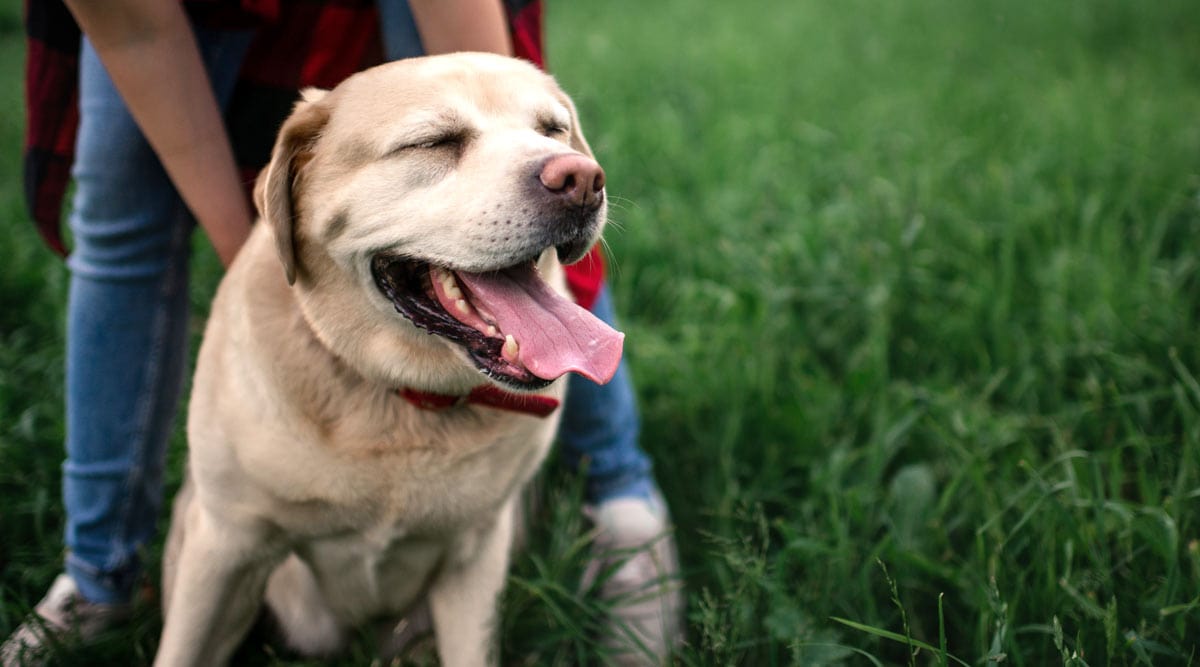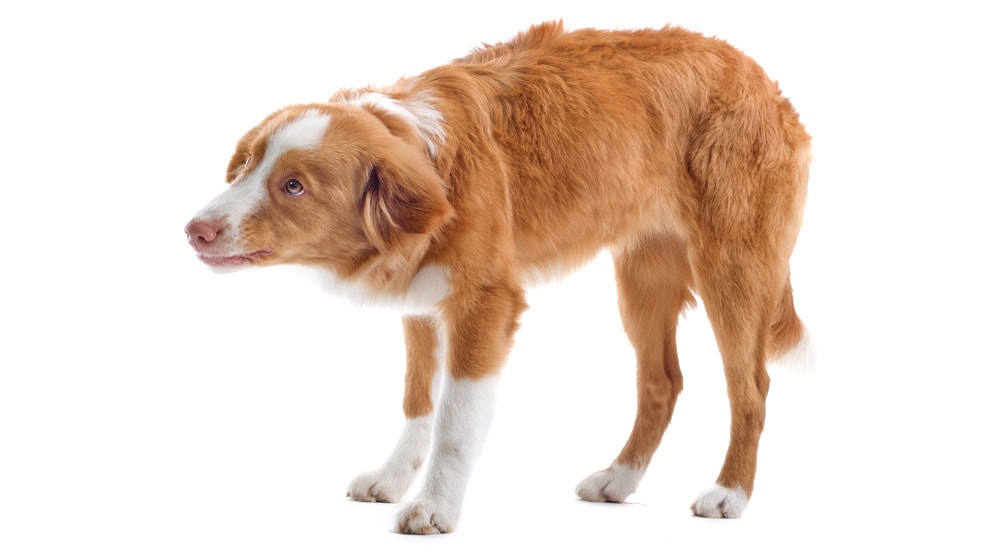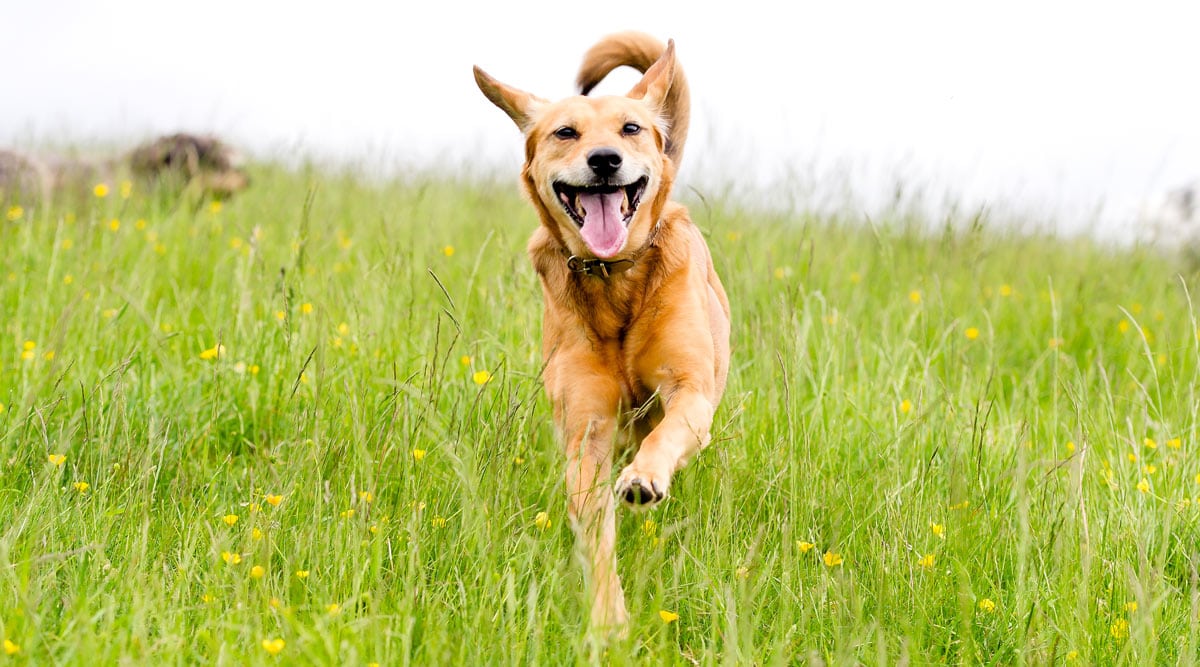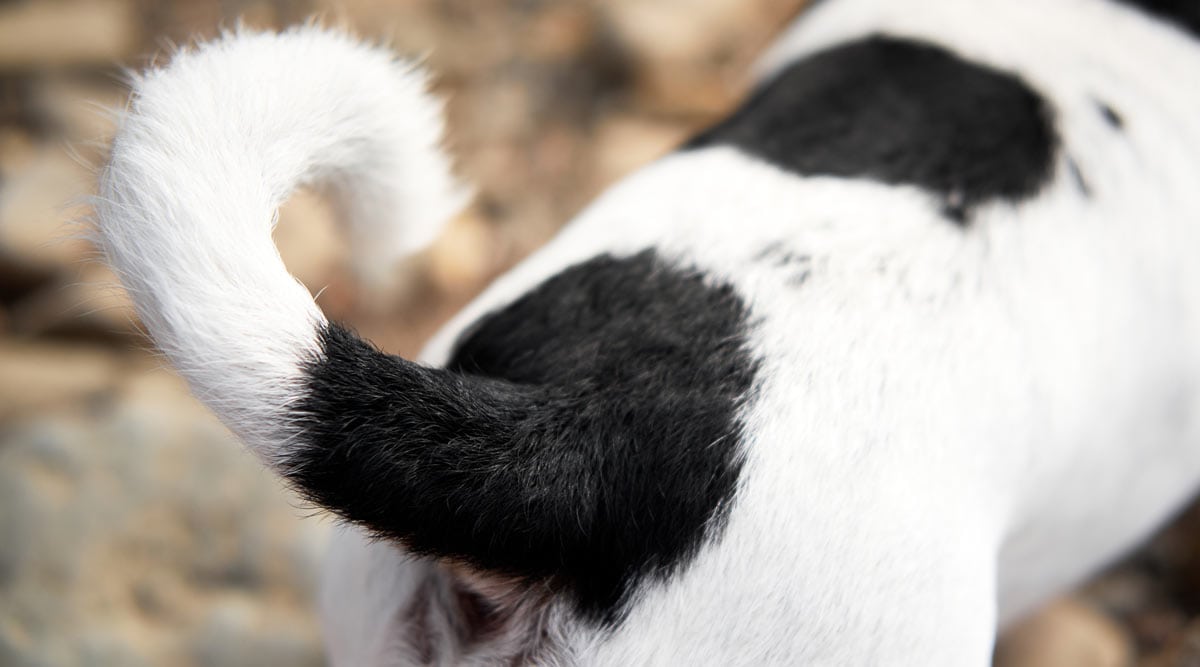Ever wondered why your dog likes being scratched above their tail? The answer is simple – it feels great!
But why does this area of the body feel particularly good when scratched? And do all dogs like being scratched there? Let’s find out!
Contents
Why Some Dogs Like Having the Base of Their Tail Scratched
Many dogs enjoy a scratch at the base of their tails. Scratching this area can often lead to tail wagging, blissful head tilting, and an appreciative gaze from our canine companions. Your pet may also lean into the scratch and have a relaxed facial expression.
These are all behaviors I’ve observed in my own dogs. Both seem to favor tail-base scratches above almost anywhere else on the body, and they’ll almost always ask for more when I stop!
So, what’s so special about this area?
The answer is simple: scratching the base of the tail feels really good to many dogs!
The tail base is full of nerve endings. When scratched, these nerves are stimulated, providing a feeling of pleasure to our dogs.
The base of the tail is also an area that’s hard for dogs to scratch themselves. If you’ve ever had a back itch you can’t reach, you know exactly how enjoyable it can be when you finally scratch it.
Why Do Dogs Like Being Petted or Scratched At All?
Now we know why dogs like the base of their tail being scratched. But have you ever wondered why dogs like being petted and scratched at all?
A dog’s body releases feel-good hormones, including endorphins and oxytocin, when they have positive contact with a bonded human. These make your dog feel happy and calm, providing a strong incentive to seek human contact.
Do All Dogs Like Being Scratched Here?
While many dogs enjoy having the base of their tail scratched, this isn’t necessarily true for all dogs.
Each dog is unique and has its own preferences when it comes to petting. Furthermore, certain health issues, like hip arthritis, can make the base of the tail an uncomfortable area to touch.
For these reasons, you should avoid scratching the base of an unfamiliar dog’s tail. Instead, let the dog approach and sniff your hand in their own time. If they seem relaxed, offer a gentle chest rub to gauge their comfort with contact.
You should also pay close attention to your own dog’s body language when scratching above the tail. If they move away or seem uncomfortable, discontinue the scratching. Be aware that scratching for too long, or using too much pressure, can also cause discomfort.
Note: Remember that some dogs may not enjoy being touched at all. Respect their space and don’t force an unwanted interaction.
When Could This Behaviour Indicate a Health Problem?
Dogs naturally enjoy a good scratch above the tail due to the high concentration of nerve endings in the region.
However, if your dog is excessively itchy, this might indicate a health condition. Here are a few possibilities:
- Skin allergies can arise from various sources, such as pollen or mould. An allergy can cause itchiness, redness, inflammation, and sometimes hair loss (including losing hair on the tail).
- Parasites like fleas or ticks can make your dog’s skin very itchy. You might notice them constantly scratching themselves, rubbing against the carpet, or seeking extra scratches from you.
- Dry skin can occur due to hormonal imbalances, too frequent bathing, fungal infections, or immune system disorders. Dry skin often goes hand in hand with itchiness.
Excessive scratching is also often accompanied by additional signs of skin conditions, such as bald patches, sores, or unusual smells.
If your dog shows these symptoms, it’s essential to consult a vet promptly. Skin issues can cause significant discomfort and may worsen without proper treatment.
Where Else Do Dogs Like to be Scratched?
While the base of the tail is a favourite scratching location for many dogs, it’s not the only spot they often enjoy being scratched. Some other examples include:
- Chest. Many dogs relish a good scratch on the chest. If you’re not sure where to pet a dog, then the chest is a good place to start.
- Belly. It’s common for relaxed dogs to roll over and ask for a belly scratch. They typically only do this with people they know and trust though.
- Behind the ears. A scratch behind the ears can be very enjoyable for dogs, due to the high concentration of nerve endings. However, remember to be gentle, as some dogs’ ears can be sensitive.
Remember, all dogs are individuals. Your dog will have their own preferences, and might not appreciate being petted in some of the typical areas.
There are also areas of the body where most dogs don’t like to be touched. The head, which is often a natural petting target for humans, can be uncomfortable for dogs – especially for small dogs or puppies. Similarly, many dogs dislike having their tails or paws touched and will pull away.
How to Tell Whether a Dog Likes Being Petted or Scratched
A good scratch or stroke may feel great to your dog, but that doesn’t mean they want to be petted all the time.
A useful comparison is to think about human affection. While you might enjoy hugs from loved ones, you wouldn’t want to be hugged continuously throughout the day. You certainly wouldn’t want to be forced into hugs with strangers, without the option to say ‘enough’.
This is true for dogs too. The pleasure from human contact depends on the situation, how the dog is feeling, and (crucially) how the dog is being petted. The identity of the ‘petter’ also matters a lot, as most dogs are less comfortable being stroked by strangers.
Unfortunately, many dog lovers don’t realize their dog isn’t enjoying being petted. Often by making a few small changes to how they are petting, both the dog and owner could enjoy their interactions more.
For these reasons, being able to read your dog’s body language signals is essential. Some signs they are enjoying being scratched at the base of the tail include leaning into the scratch, wagging the tail in a relaxed manner, and having a relaxed facial expression.
Equally, recognizing signs of discomfort is vital. If your dog turns their head away, licks their lips, holds their tail down, yawns, or moves away, they’re probably not enjoying the interaction.
Here are dog trainer Rebecca Morello’s thoughts on this issue:
Aside from obvious ways a dog shows us they are not enjoying being stroked (such as moving away or even growling), there are subtle signals. The most common warning signs, which often go undetected, include panting, looking away from the person, lip licking, yawning, whale eye and even licking the person! These are all ways a dog tries to diffuse the situation and show they are uncomfortable.
Rebecca Morello, Dog Trainer (IMDT, ADUK)
The best way to check is by giving your dog regular breaks whilst stroking them. Stop touching the dog and see if they ask for more, or whether they then choose to move away.
Always respect your dog’s right to space, and don’t be offended if they’ve had enough of being petted. They’ll probably want more affection in the near future!
Frequently Asked Questions
Why Does My Dog Air Lick When I Scratch the Base of His Tail?
Air licking, when dogs are being given affection, is often a sign of enjoyment. However, air licking can signify nausea too. So if your dog has started air licking at random times, you might want to consult a vet.
Do Dogs Like Their Tails Being Stroked?
In a word, no. Most dogs find their tails being touched quite uncomfortable, as tails are a sensitive and exposed part of the body.
What is the Scratch Reflex in Dogs?
The ‘scratch reflex’ refers to a dog’s instinctive kick when a certain spot on their belly is scratched. This spot, also known as the “sweet spot,” is a nerve-dense area that triggers the reflex. The scratch reflex probably evolved as a mechanism to dislodge annoying insects or parasites.
Summary
Dogs often enjoy being scratched at the base of their tail. This is due to the abundance of nerve endings in this hard-to-reach area.
However not every dog appreciates being scratched above the tail. Understanding your dog’s petting preferences and body language is important, as this can avoid unnecessary stress for your pet.
Do you have any questions about why dogs like being scratched above the tail? Let us know in the comments section.




